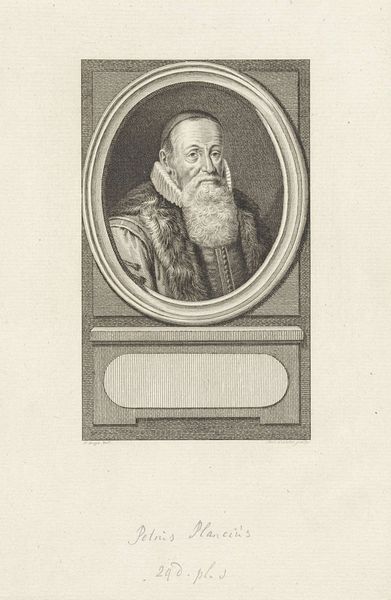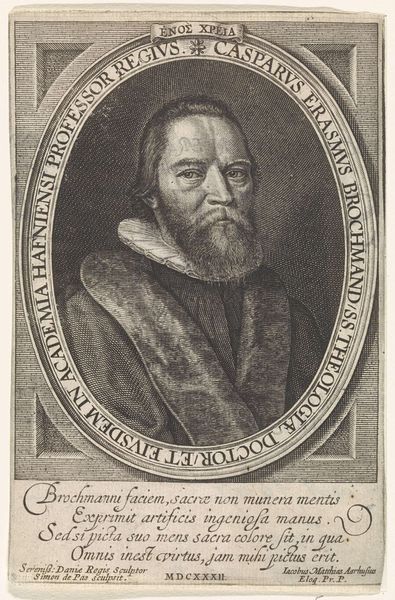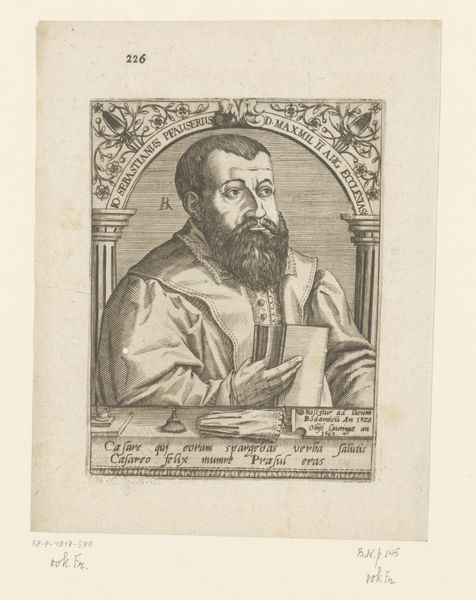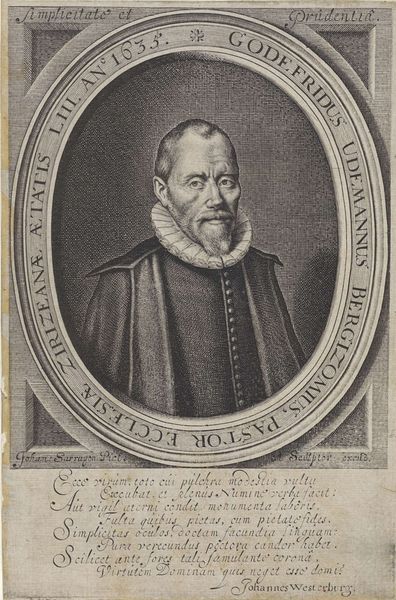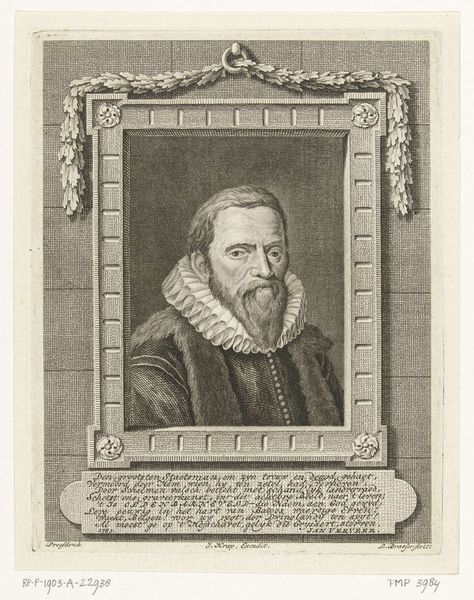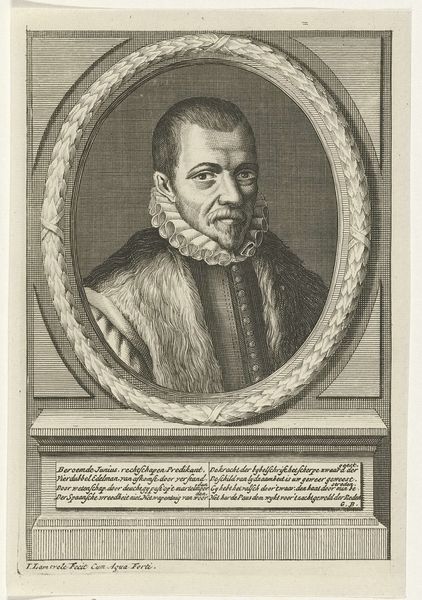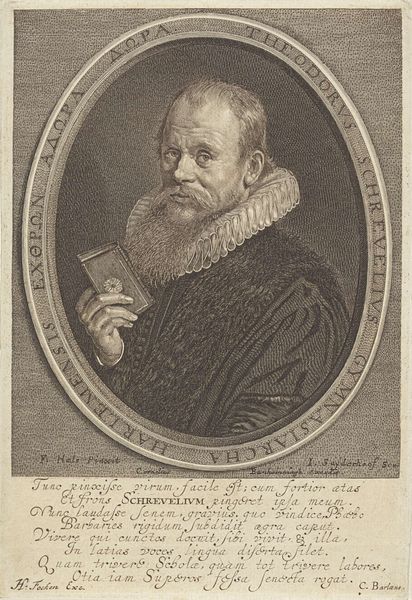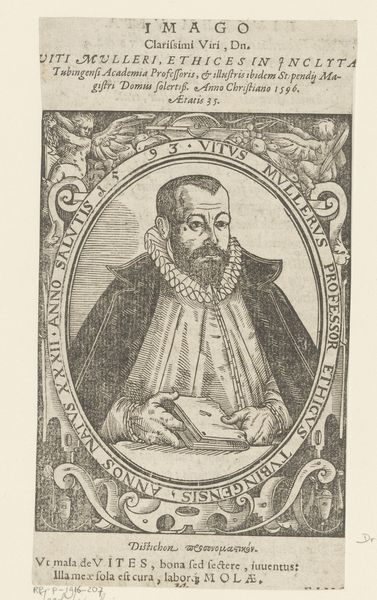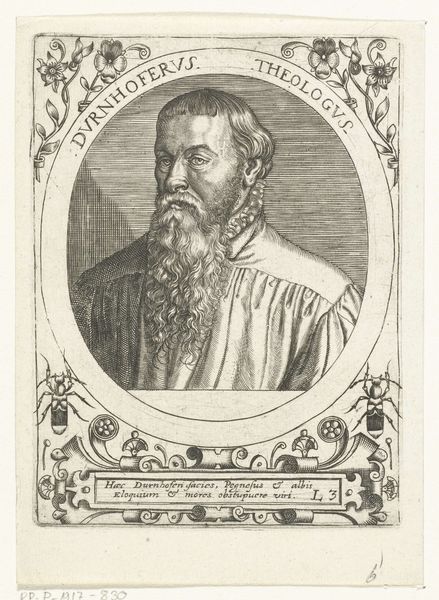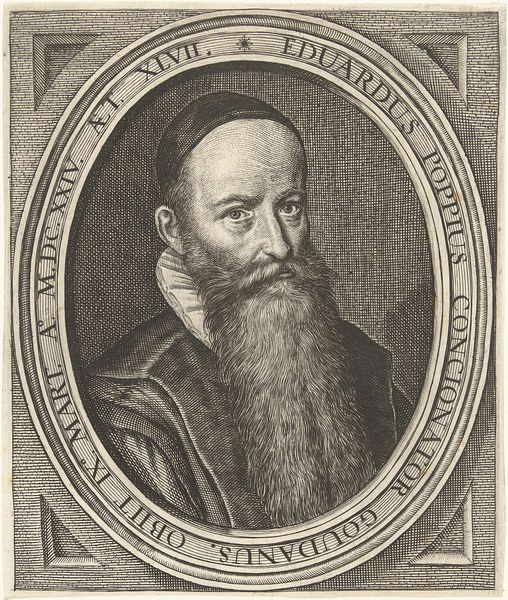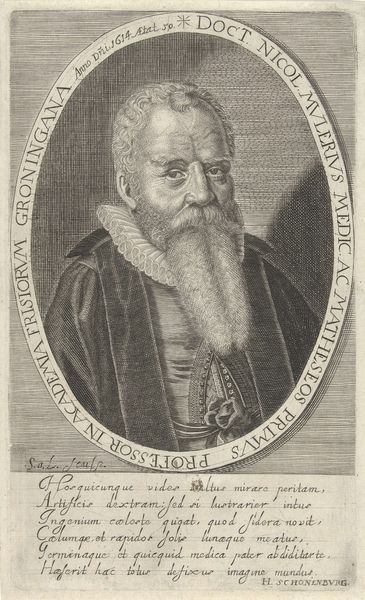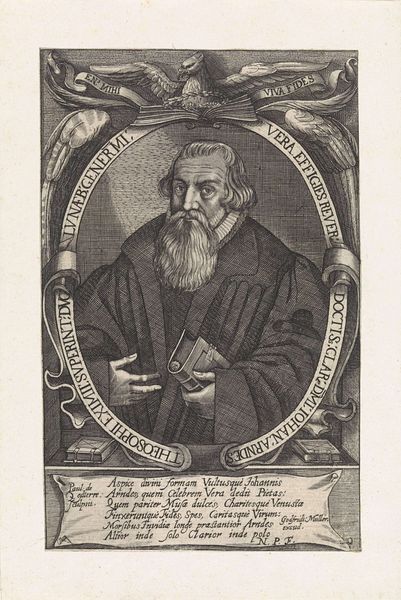
engraving
#
portrait
#
neoclacissism
#
11_renaissance
#
history-painting
#
engraving
#
miniature
Dimensions: height 103 mm, width 69 mm
Copyright: Rijks Museum: Open Domain
Editor: This engraving, "Portret van Conradus Vorstius," dating back to between 1783 and 1795, is quite striking in its detail despite its small scale. I'm immediately drawn to the intensity of Vorstius’s gaze and the elaborate presentation. What catches your eye, looking at it as an image maker? Curator: The image of the open book below Vorstius’ portrait carries significant weight. Here we see an unveiling of knowledge, an invitation, and perhaps even a symbol of the very controversies he faced as a theologian. Consider the weight of books in Reformation and post-Reformation Europe. Do you think the artist meant to portray Voerstius's intellectual nature in this context? Editor: It does seem intentional, now that you point it out. The placement is like a key to understanding the subject, with the books functioning almost as a foundation or point of origin. What do you make of the border? Curator: The artist is consciously echoing established patterns of representing influential historical figures within contained symbolic space. In earlier Northern Renaissance portraiture, a border would feature the subject's coat-of-arms; here it might emphasize this individual's claim to knowledge and cultural memory. Editor: That makes me appreciate how much these types of cultural artifacts communicate just through established patterns. It really gives you a peek into that time period’s collective memory, doesn’t it? Curator: Exactly. And how individuals at that time sought to position themselves within those visual codes and cultural values. There are continuities and variations across generations that point to the ever shifting nature of cultural memory. Editor: This portrait and the books provide interesting clues about his role within history! I never thought about cultural memory that way.
Comments
No comments
Be the first to comment and join the conversation on the ultimate creative platform.
